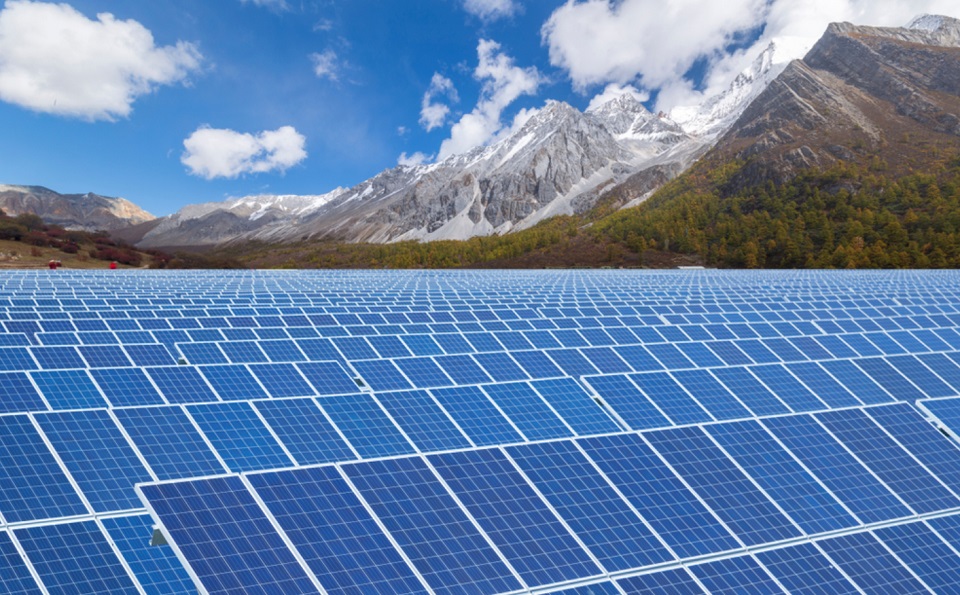
Decisions made this decade will largely determine whether world leaders can limit global warming to 1.5 or two degrees Celsius of warming below pre-industrial levels and avoid the increasingly more drastic impacts of the climate crisis.
That’s one key takeaway from the Intergovernmental Panel on Climate Change’s (IPCC) Synthesis Report of the findings gathered in its Sixth Assessment Cycle. The Summary for Policymakers, released Monday, found that all economic sectors would need to launch “rapid and deep and, in most cases, immediate” cuts in greenhouse gas emissions before 2030 in order to have a more than 50 percent chance of limiting warming to 1.5 degrees Celsius or a more than 67 percent chance of limiting it to two degrees Celsius of warming. However, the IPCC emphasized that it is entirely possible to improve the global outlook if world leaders act urgently.
“Mainstreaming effective and equitable climate action will not only reduce losses and damages for nature and people, it will also provide wider benefits,” IPCC Chair Hoesung Lee said in a press release. “This Synthesis Report underscores the urgency of taking more ambitious action and shows that, if we act now, we can still secure a liveable sustainable future for all.”
The report had 93 authors, but drew on the findings of all of the IPCC reports published since the UN review body began its Sixth Assessment Cycle in 2015. These include the Special Report on Warming of 1.5 Degrees Celsius, the Working Group I report on the Physical Science Basis, the Working Group II report on Impacts, Adaptation and Vulnerability and the Working Group III report on Mitigation of Climate Change. The IPCC’s assessment cycles last every six to seven years, and its Fifth Assessment Report, published in 2014, was the main scientific source for negotiators of the Paris agreement. The UN climate science review body is hoping that its latest offering will be similarly influential.
The report states “unequivocally” that human activity, in particular the releasing of greenhouse gas emissions, has already warmed the planet by 1.1 degrees Celsius above the average for 1850 to 1900, and this has already led to “widespread and rapid changes” in the air, ocean and on land. What’s more, the World Resources Institute pointed out, these changes are more severe than expected, with flooding and other extreme storms displacing more than 20 million people from their homes annually since 2008 while, at the same time, around half of the world’s population deals with severe water scarcity at least one month out of every year. Each degree of warming will only make matters worse, and the report authors noted that many of the risks assessed in the report were higher than assumed by the Fifth Assessment Report.
“What the new SYR shows is the gravity of the problem,” report core author and senior lecturer in climate science at Grantham Institute – Climate Change and the Environment, Imperial College London, Dr. Friederike Otto said in a statement shared by the Science Media Centre. “The very first figure shows all the human and natural systems that are already adversely affected. In other words, many more people have lost their lives and livelihoods than originally thought. The climate changes as much as we’ve expected for decades, but we humans and our societies are more fragile than we thought before.”
At the same time, these impacts have not been suffered equally, something the report authors were keen to point out.
“Climate justice is crucial because those who have contributed least to climate change are being disproportionately affected,” report author Dr. Aditi Mukherji said in the IPCC release. “Almost half of the world’s population lives in regions that are highly vulnerable to climate change. In the last decade, deaths from floods, droughts and storms were 15 times higher in highly vulnerable regions.”
Governments, companies and individuals have begun to act in response to the climate crisis, and, if they had not, it is likely that yearly emissions would be several gigatons of carbon dioxide higher. That said, current policies remain drastically insufficient. Policies implemented to date still put the world on track for 3.2 degrees of warming by 2100.
“The existing policy trajectory represents a profound failure of our governments, and of our international political system,” Jason Hickel of the Institute of Environmental Science and Technology at the Autonomous University of Barcelona wrote on Twitter. “We need much more aggressive mitigation and much stronger international cooperation.”
However, it is still possible to limit global warming to 1.5 or two degrees Celsius by the end of the century if emissions are nearly halved this decade and reach net zero by either the early 2050s for 1.5 degrees or the early 2070s for two degrees. Achieving this will require major reduction to the development and extraction of fossil fuels: current fossil fuel infrastructure would emit enough on its own to overshoot the 1.5 degree temperature target, the report authors found, while both current and planned developments devour the remaining carbon budget for two degrees of warming.
The news comes the week after President Joe Biden approved ConocoPhillips’s controversial Willow oil drilling project in Alaska, despite promises to halve U.S. emissions by 2030.
“Reading the UN’s latest dire climate warnings just days after Biden approved massive new Arctic oil drilling is utterly infuriating,” Shaye Wolf, climate science director at the Center for Biological Diversity, said in a statement emailed to EcoWatch. “The fossil-fueled path to more climate disasters, mass displacements and wildlife extinctions is bleak, but it’s not inevitable. Chief among world leaders, Biden has the tools to not only ratchet up renewables but move us decisively off fossil fuels. Scientists have mapped the way to a livable planet, but we need the political will to get us there.”
Beyond putting an end to fossil fuel use, the report offered many solutions to both reduce emissions and help vulnerable communities adapt to the inevitable impacts of climate change, including expanding access to renewable energy, improving transportation through enabling more walking, cycling and public transit options and preserving 30 to 50 percent of Earth’s land and ocean area. Many of these solutions would also address other health, environmental or equity problems. For example, the air pollution reductions from decarbonizing electricity and transit would lead to public health benefits that would counterbalance the cost of cutting emissions.
“The threats are huge, but so are the opportunities for change. This is our moment to rise up, scale up and be bold. Governments must stop doing just a little better and start doing enough,” Greenpeace Nordic senior policy advisor Kaisa Kosonen said in a statement emailed to EcoWatch. “Thanks to brave scientists, communities and progressive leaders around the world, who’ve persistently advanced climate solutions like solar and wind energy for years and decades, we now have everything needed to solve this mess. It’s time to up our game, deliver on climate justice and push fossil fuel interests out of the way. There’s a role for everyone to play.”
This article was reposted from EcoWatch.









